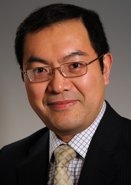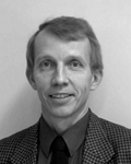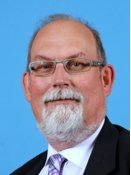Each year, LAPC convenes four special sessions for invited guest speakers reflecting the breadth of current research. For LAPC 2016, the Chairs have chosen the following topics.
- Radar Sensing and Industrial Applications
- mm-Wave Antennas and Applications
- Advances in the use of Graphene for Antenna and Component Design
- Latest Developments in Antenna Measurements and Simulations
- Professsor Yahya Rahmat-Samii, University of California, Los Angeles, USA
- Dr Alex Feresidis, University of Birmingham, UK
- Professor Yang Hao, Queen Mary, University of London, UK
- Rob Lewis, BAE Systems, UK
- Professor Antti Räisänen, Aalto University, Finland
- Professor Tony Brown, The University of Manchester, UK
- Professor Vincent Fusco, Queen's University Belfast, Northern Ireland
- Dr Simon Stirland, Airbus Defence & Space
- Professor Trevor Bird, Macquarie University, Australia
- Professor Dr.-Ing. Thomas Eibert, Technical University of Munich, Germany
- Dr Antonio Lombardo, University of Cambridge, UK
- Professor Olav Breinbjerg, Technical University of Denmark, Denmark
 Professsor Yahya Rahmat-Samii, University of California, Los Angeles, USA
Professsor Yahya Rahmat-Samii, University of California, Los Angeles, USA
Yahya Rahmat-Samii (S’73-M’75-SM’79-F’85) is a Distinguished Professor, holder of the Northrop Grumman Chair in Electromagnetics, member of the US National Academy of Engineering (NAE), winner of the 2011 IEEE Electromagnetics Award and past Chairman of the Electrical Engineering Department, University of California, Los Angeles (UCLA). He was a Senior Research Scientist with the National Aeronautics and Space Administration (NASA) Jet Propulsion Laboratory (JPL), California Institute of Technology prior to joining UCLA in 1989. In summer 1986, he was a Guest Professor with the Technical University of Denmark (TUD). He has also been a consultant to numerous aerospace and wireless companies. He has been Editor and Guest editor of numerous technical journals and books. He has authored and co-authored over 1000 technical journal and conference papers and has written 35 book chapters.
Dr. Rahmat-Samii is a Fellow of the Institute of Advances in Engineering (IAE) and a member of Commissions A, B, J and K of USNC-URSI, the Antenna Measurement Techniques Association (AMTA), Sigma Xi, Eta Kappa Nu and the Electromagnetics Academy. He was Vice-President and President of the IEEE Antennas and Propagation Society in 1994 and 1995, respectively. He was appointed an IEEE AP-S Distinguished Lecturer and presented lectures internationally. He was a member of the Strategic Planning and Review Committee (SPARC) of the IEEE. He was the IEEE AP-S Los Angeles Chapter Chairman (1987-1989); his chapter won the best chapter awards in two consecutive years. He is listed in Who's Who in America, Who's Who in Frontiers of Science and Technology and Who's Who in Engineering. Read more
 Dr Alexandros Feresidis, University of Birmingham. UK
Dr Alexandros Feresidis, University of Birmingham. UK
Alexandros Feresidis is a Senior Lecturer in Communications Engineering at the School of Engineering, University of Birmingham, UK, and a former Royal Academy of Engineering/Leverhulme Trust Senior Research Fellow. He leads research on artificial electromagnetic metamaterial structures, antennas, microfabrication, microwave/mmWave and THz circuits and systems. Dr Feresidis has published more than 130 papers in peer reviewed international journals and conference proceedings and has co-authored three book chapters. His work has been cited over 2000 times with h-index of 17.He has presented a number of invited papers and seminars in international conferences and European PhD schools.He is a member of the UK EPSRC Peer Review College and he is on the Editorial Board of IET Microwaves, Antennas and Propagation journal. He recently served as Lead Guest Editor in an IET Special Issue on “Emerging Reconfigurable Antenna Technologies”. He currently leads projects on mm-wave and terahertz antennas for communications and radar systems.

Professor Yang Hao, Queen Mary University of London, UK
Professor Yang Hao received the Ph.D. degree from the Centre for Communications Research (CCR) at the University of Bristol, U.K. in 1998. From 1998 to 2000, he was a postdoc research fellow at the School of Electrical and Electronic Engineering, University of Birmingham, U.K. In May 2000, he joined the Antenna and Electromagnetics Group, Queen Mary, University of London, London, U.K. first as a lecturer and was promoted to Reader in 2005 and to Professor in 2007.
Professor Hao currently leads a £4.6M EPSRC QUEST programme grant on transformation electromagnetics and microwave metamaterials. He is a management board member of Cambridge Graphene Center, which has attracted over £25M funding from UK EPSRC. Over the years, he developed several fully-integrated antenna solutions based on novel artificial materials to reduce mutual RF interference, weight, cost and system complexity for security, aerospace and healthcare. He developed, with leading UK industries, novel and emergent gradient index materials to reduce mass, footprint and profile of low frequency and broadband antennas. He also co-developed the first stable active non-Foster’s metamaterial to enhance usability through small antenna size, high directivity, and tuneable operational frequency. He coined the term ‘Body-centric wireless communications’, i.e. networking among wearable and implantable wireless sensors on the human body. He was the first to characterize and include the human body as a communication medium between on-body sensors using surface and creeping waves. He contributed to the industrial development of the first wireless sensors for healthcare monitoring, digital plaster antennas and textile antennas. Professor Hao is a strategic advisory board member for Engineering and Physical Sciences Research Council (EPSRC), where he is committed to championing RF/microwave engineering for reshaping the future of UK manufacturing and electronics
 Rob Lewis, BAE Systems, UK
Rob Lewis, BAE Systems, UK
Rob Lewis is Capability Technology Leader at BAE Systems Applied Intelligence Laboratory in Chelmsford, UK. His responsibilities include definition of technical strategy and guidance to over 60 engineers working on RF and optical systems for defence, aerospace and cyber security applications. Rob chairs the IET’s Professional Network on Antennas and Propagation, is a regular contributor to the international EuCAP conferences and has served on both organising and technical committees for the EuCAP and LAPC conference series.
 Professor Antti Räisänen, Aalto University, Finland
Professor Antti Räisänen, Aalto University, Finland
Antti V. Räisänen received the Doctor of Science (Tech.) degree in electrical engineering from the Helsinki University of Technology (TKK) (now Aalto University), Espoo, Finland, in 1981. In 1989, he became a Professor Chair of Radio Engineering with TKK, after holding the same position pro tem in 1985 and 1987–1989. He has been a Visiting Scientist and Professor with the Five College Radio Astronomy Observatory (FCRAO) and University of Massachusetts at Amherst (1978–1979, 1980, 1981), Chalmers University of Technology, Göteborg, Sweden (1983), University of California at Berkeley (1984–1985), Jet Propulsion Laboratory (JPL) and California Institute of Technology, Pasadena (1992–1993), and the Paris Observatory and University of Paris 6, Paris, France (2001–2002).
He currently supervises research in millimeter-wave components, antennas, receivers, microwave measurements, etc. with the School of Electrical Engineering, Aalto University, Department of Radio Science and Engineering and Millimetre Wave Laboratory of Finland—ESA External Laboratory (MilliLab). The Centre of Smart Radios and Wireless Research (SMARAD), which he leads at Aalto University, obtained the national status of Center of Excellence (CoE) in Research for 2002–2007 and 2008–2013. He is currently Head of the Department of Radio Science and Engineering, Aalto University. In 1997, he was elected the Vice-Rector of TKK (1997–2000). He has authored or coauthored some 500 scientific or technical papers and six books, e.g., Radio Engineering for Wireless Communication and Sensor Applications (Artech House, 2003).
 Professor Tony Brown, The University of Manchester, UK
Professor Tony Brown, The University of Manchester, UK
Anthony (Tony) Brown is Professor of Communication Engineering in the MCS research group . He was Head of School for Electrical and Electronic Engineering (until Sept 2015) and, prior to that, Associate Dean for Teaching and Learning in the Faculty of Engineering and Physical Sciences (until May 2012).
Tony is a Fellow of the IET and the IMA, a Senior Member of the IEEE and a Member of the IOD. He joined academia in 2003 as research group leader after a 30 year industrial career including senior Board level positions. He maintains strong industrial links and is currently CTO and Director of two companies. His current research inters are in Radio Astronomy, Communications, Radar and Computational Electromagnetics.
Tony has acted as a international consultant on marine safety related radar matters (including Vessel Traffic Radar) and has served on numerous international committees. This has included as a member of the Technical Advisory Commission (TAC) to the Federal Communication Commission(USA) and the EUROCAE technical working group WG-41. Read more

Professor Vincent Fusco, Queen's University Belfast, Northern Ireland
Vincent Fusco obtained his Bachelors degree in Electrical and Electronic Engineering (First Class Honours) and his PhD in Microwave Electronics from the Queen’s University of Belfast in 1979 and 1982 respectively. In 2000 he was awarded a DSc by Queen’s University for his work on Advanced Front End Architectures with Enhanced Functionality, where since 1995 he has held a personal chair in High Frequency Electronic Engineering.
Professor Fusco has published 400 scientific papers in major journals and in referred international conferences, and is the author of two text books. He holds several patents and has contributed invited chapters to books in the field of active antenna design and EM field computation.
He is a Fellow of the Royal Academy of Engineering, Fellow of the Institute of Electrical Engineers IEE, Fellow of the Institute of Electrical and Electronic Engineers IEEE. In 1986 he was awarded a British Telecommunications Fellowship and 1997 he was awarded the NI Engineering Federation Trophy for outstanding industrially relevant research.
 Dr Simon Stirland, Airbus Defence & Space
Dr Simon Stirland, Airbus Defence & Space
Simon Stirland graduated from Cambridge University with degrees in Mathematics and Statistical Physics and since then has been involved in antenna developments at BAe, Matra Marconi and Astrium from the late 1980’s onwards. Early work focused on optimisation codes for shaped reflector antennas, then on design of active antennas of various types and applications and on adaptive nulling algorithms. With the new emphasis on multi-beam antennas it has become clear that optimisation of reflector antenna feeds can have a large impact on antenna-level performance, and a number of codes for optimisation of corrugated and smooth-walled horns have been developed. He has served as technical committee member and session chair at many conferences, and has twice been a winner of the best antenna paper award at ICAP and more recently EuCAP conferences.
 Professor Trevor Bird, Macquarie University, Australia
Professor Trevor Bird, Macquarie University, Australia
Trevor S. Bird received B. App. Sc., M. App. Sc. and PhD degrees from the University of Melbourne. He was a Postdoctoral Research Fellow at Queen Mary College, University of London for two years from 1976, followed by five years as a Lecturer in the Department of Electrical Engineering at James Cook University of North Queensland. During 1982 and 1983 he was a consultant at Plessey Radar, UK, and in 1983 he joined CSIRO in Sydney, Australia. He held several positions with CSIRO up to 2014, including Chief Scientist, ICT Centre (2004-2011), and was elected a CSIRO Fellow in 2007.He is currently Principal of Antengenuity, a specialist consulting firm, Distinguished Visiting Professor at University of Technology, Sydney and Adjunct Professor at Macquarie University, Sydney.
Dr Bird is a Fellow of the Australian Academy of Technological and Engineering Sciences, the IEEE, the Institution of Electrical Technology (IET), an Honorary Fellow of the Institution of Engineers, Australia, and a Fellow of Queens College, University of Melbourne. He received the John Madsen Medal of the Institution of Engineers, Australia on four occasions for the best paper published annually in the Journal of Electrical and Electronic Engineering, Australia. In 2001 he was co-recipient of the H.A. Wheeler Applications Prize Paper Award of the IEEE Antennas & Propagation Society. He has been awarded CSIRO Medals for achievement on three occasions, and in 2000 he received an IEEE Third Millennium Medal for outstanding contributions to the IEEE New South Wales Section. He received project awards from the Society of Satellite Professionals International (New York) in 2004, the Engineers Australia in 2001, and the Communications Research Laboratory, Japan, in 2000. In 2003 he was awarded a Centenary Medal for service to Australian society in telecommunications and was also named Professional Engineer of the Year by the Sydney Division, Engineers Australia. He was awarded the M.A. Sargent Medal in 2012 by Engineers Australia for sustained contributions to electrical engineering. Since 2006, his biography has been listed in Who’s Who in Australia.
He has published over 350 papers, 1 book, 10 book chapters, and he holds 12 patents. He was a Distinguished Lecturer for the IEEE Antennas & Propagation Society from 1997 to 1999, Chair of the New South Wales joint AP/MTT Chapter from 1995 to 1998, and again in 2003, Chairman of the 2000 Asia Pacific Microwave Conference, Member of the New South Wales Section Committee from 1995-2005 and was Vice-chair and Chair of the Section in 1999-2000 and 2001-2002 respectively, Associate Editor of the IEEE Transactions on Antennas & Propagation from 2001 to 2004, a member of the Administrative Committee of the IEEE Antennas & Propagation Society from 2003 to 2005, Editor-in-Chief of the IEEE Transactions on Antennas & Propagation from 2004 to 2010, and President of the IEEE Antennas & Propagation Society in 2013. He was a member of the College of Experts of the Australian Research Council (ARC) in 2006-2007, the technical committee of numerous conferences including JINA, ICAP, AP2000, and the URSI Electromagnetic Theory Symposium, and also a member of the Editorial Boards of the IET Microwaves Antennas & Propagation, and the Journal of Infrared, Millimeter and Terahertz Waves. Currently he is a member of the IEEE Antennas & Propagation Society AdCom, and the New South Wales Division Committee of ATSE.
.
 Professor Dr.-Ing Thomas Eibert, Technical University of Munich, Germany
Professor Dr.-Ing Thomas Eibert, Technical University of Munich, Germany
Prof. Eibert’s (b. 1966) research work is focused on the field of high frequency engineering. His goal is to develop novel and innovative applications for radio, communications and sensors by gaining greater understanding of electromagnetic processes at high frequencies. He focuses particularly on novel algorithms for electromagnetic modeling as well as field transformations and imaging methods.
After completing his studies in electrical engineering, Prof. Eibert received his doctorate at the University of Wuppertal in 1997. Following a period of research at the University of Michigan in Ann Arbor, USA, he was a research fellow at Deutsche Telekom’s Technology Center in Darmstadt between 1998 and 2002. From 2002 to 2005, he was head of the “Antennas and Scattering” department at the Fraunhofer Institute for High Frequency Physics and Radar Technologies in Wachtberg. In 2005, he became professor of radio frequency technology at the University of Stuttgart and has been full professor of high frequency engineering at TUM since 2008.
 Professor Olav Breinbjerg, Technical University of Denmark, Denmark
Professor Olav Breinbjerg, Technical University of Denmark, Denmark
Olav Breinbjerg was born in Silkeborg, Denmark, in 1961. He received the M.Sc. and Ph.D. degrees in electrical engineering from the Technical University of Denmark (DTU), Lyngby, Denmark, in 1987 and 1992, respectively. Since 1991, he has been on the Faculty of the Department of Electrical Engineering as an Assistant Professor from 1991 to 1995, Associate Professor from 1995 to 2005, and Full Professor since 2006. He is now Head of the Electromagnetic Systems Group and the DTU-ESA Spherical Near-Field Antenna Test Facility. He was a Visiting Scientist at Rome Laboratory in 1988, a Fulbright Research Scholar at the University of Texas at Austin in 1995, and a Visiting Professor at the University of Sienna in 2011. He has been, or is, the main supervisor of 12 Ph.D. projects. His research is generally in applied electromagnetics— and particularly in antennas, antenna measurements, computational techniques, and scattering—for applications in wireless communication and sensing technologies. He is the author or coauthor of over 55 journal papers, 150 conference papers, and 80 technical reports. Dr. Breinbjerg was a recipient of a U.S. Fulbright Research Award in 1995, the 2001 AEG Elektron Foundation’s Award in recognition of his research in applied electromagnetics, and the 2003 DTU Student Union’s Teacher of the Year Award for his course on electromagnetics.













